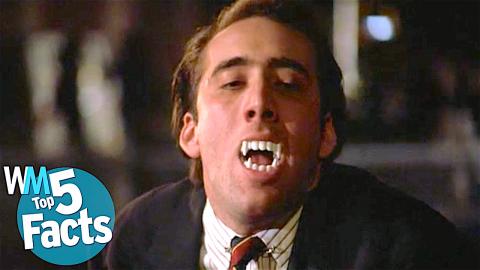Top 5 Spooky but TRUE Facts About Vampires

Top 5 Real-Life Facts About Vampires
Was vampire mythology created from just pure imagination, or was there some historical basis to the legends? Could the symptoms of certain diseases actually give someone a classic vampiric appearance? It may also surprise you to learn that real-life vampires live, and walk among us! On this edition of Top 5 Facts, we sort through the legends and the news to bring you the Top 5 Most Interesting Facts About Real-Life Vampires!
Special thanks to our users for submitting the idea on our Interactive Suggestion Tool at http://www.WatchMojo.comsuggest
#5: They Live Among Us
Have you ever met a vampire? It sounds like a silly question, but vampires are much more common than you might think. According to estimates made by John Edgar Browning, a professor of English who specializes in horror and vampire culture, roughly 50 or more real vampires can be found in the average American city. And they aren’t creatures of the night who stalk the shadows - they work regular jobs (often in the daylight), shop at the grocery store and go to the movies just like you. They actually have organized groups like NOVA: the New Orleans Vampire Association, or the AVA: Atlanta Vampire Alliance, which estimates the total number of American vampires to be roughly 5000, if not more.
#4: Call It Placebo, but the Symptoms Are Real
According to one real-life vampire interviewed by John Edgar Browning, attempting to quit drinking blood put her in the hospital. Like many of her peers, she would prefer to lead a normal life, but her attempts resulted in exhaustion, crippling migraines, dangerously low blood pressure and heart palpitations. After feeding, she recovered almost immediately. Many vampires discover their condition during their teens, when (plagued with extremely low energy), a chance taste of human blood yields an instant boost and sense of well being. Science hasn’t found any medical basis to support clinical vampirism, but the physical symptoms are curious. It’s either an extreme example of the “nocebo effect,” or clinical vampirism is in fact real, and simply medically misunderstood.
#3: They Want To Change Their Social Stigma
Groups like NOVA and the AVA go out of their way to change the stigma associated with vampires as a result of their depiction throughout history and in pop culture. They get involved with charitable initiatives, such as feeding the homeless or night safety patrols, as a means of increasing awareness and improving the public image of vampires everywhere. While many of them have embraced the popular “vampire aesthetic,” others just look like your average citizen. Many real-life vampires intentionally distance themselves from the idea of “vampirism” as depicted in film, television, video games and literature. They also scoff at any vampire-specific superstitions like garlic or holy water. They consider their vampire identity to be medical in nature, not simple roleplaying or a cultural obsession.
#2: They Generally Avoid Taking Victims
As NOVA-members told Browning, any vampire that admitted to hurting a human in the pursuit of blood would be immediately reported to authorities and ostracized from their organization. Drinking blood by force has more commonly been associated with violent murderers in history, who do so as part of obsessive ritualized killings, rather than as a result of a real (or imagined) physiological need. Real-life vampires usually source blood from close friends or family– willing victims called “donors” who volunteer. Other vampires don’t drink blood at all, but rather claim to source energy psychically, or even sexually– though they are less common than sanguinarian vampires.
#1: There Are Medical Bases For Vampire Legends
While science struggles to explain modern vampires, modern science can help explain vampires throughout history. Victims of tuberculosis for example, became pale, coughed up blood and avoided sunlight. Now consider how contagious this deadly disease was and you can see how a society that isn’t medically advanced could see it as supernatural. According to UCLA historian Paul Barber, vampirism was also an explanation for corpses that decomposed unnaturally slowly. We now know that this can result from a number of diseases. Rabies, for example, usually ends in cardiorespiratory failure and hemorrhaging, as a result of which, the body takes longer to decay. But consider the tendency of rabid individuals to bite and claw at others, add in the fact that it was commonly transmitted by bats... and you’ve got a solid vampire origin story.
Have vampires lost any of their sexy supernatural appeal in your eyes? Do you believe that real-life vampires suffer from a yet to be discovered medical condition? For more super sexy supernatural top 10s and transmitted by bats Top 5s, be sure to subscribe to WatchMojo.com.
